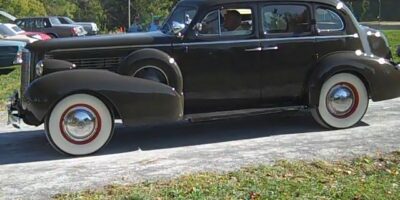Exploring the Legacy of Chrysler: The Old Era
Chrysler, one of the most storied automakers in American history, has a deep and fascinating past. This article delves into the iconic periods and models that defined the old era of Chrysler, focusing on its evolution and contributions to the automotive industry.
The Founding and Early Years
In 1925, Walter P. Chrysler founded the Chrysler Corporation. A seasoned executive from General Motors, he brought a wealth of experience and a clear vision. The company quickly made a name for itself by introducing innovations such as hydraulic brakes and rubber engine mounts, which significantly enhanced vehicle performance and comfort.
The 1924 Chrysler Six
The 1924 Chrysler Six marked the company’s first major success. This vehicle featured a high-compression six-cylinder engine, a rarity at the time. Its combination of engineering excellence and affordability made it a popular choice among consumers, setting the stage for future growth.
The Great Depression and Survival
The Great Depression posed significant challenges for all automakers. Despite these hardships, Chrysler managed to weather the storm better than many of its competitors. Innovations such as the streamlined airflow designs and the introduction of the Plymouth brand helped the company sustain its market position.
Aviation and Wartime Contributions
During World War II, Chrysler shifted its focus to support the war effort. The company manufactured aircraft engines, tanks, and other military equipment. This period of contributing to the war not only showcased Chrysler’s versatility but also helped stabilize its financial standing.
The Post-War Boom
After the war, Chrysler experienced a period of substantial growth. The introduction of the Hemi V8 engine in the 1950s revolutionized performance standards. Models like the Chrysler 300 became synonymous with power and luxury, capturing the imagination of automotive enthusiasts nationwide.
The Influence of Virgil Exner
Virgil Exner, a pioneering automobile designer, played a pivotal role in shaping Chrysler’s image during the 1950s. His “Forward Look” design philosophy brought a new aesthetic to the brand. Tailfins, sleek lines, and futuristic elements became the hallmark of Chrysler vehicles, distinguishing them from competitors.
The 1960s: Innovation and Expansion
In the 1960s, Chrysler continued to innovate with its Turbine Car, which ran on a jet engine. Although ultimately not commercially successful, it demonstrated the company’s willingness to explore bold new technologies. This decade also saw Chrysler expanding its global presence, acquiring stakes in international markets.
Challenges in the 1970s
The 1970s brought a series of difficulties for Chrysler. Rising fuel prices and increased competition from foreign automakers took a toll. Quality control issues and labor disputes further exacerbated the situation. Despite these hurdles, Chrysler managed to release notable models like the Dodge Charger and Plymouth Barracuda.
The K-Car Revolution
Entering the 1980s, Chrysler faced potential bankruptcy. However, the introduction of the K-car platform, spearheaded by CEO Lee Iacocca, proved to be a game-changer. These compact, front-wheel-drive vehicles were economical and quickly became popular. The Dodge Aries and Plymouth Reliant played crucial roles in the company’s revival.
The Minivan Breakthrough
One of Chrysler’s most significant breakthroughs came with the introduction of the minivan in 1983. The Dodge Caravan and Plymouth Voyager pioneered this segment, offering an entirely new vehicle category that appealed to families. This innovation secured Chrysler’s financial health and industry standing.
Technological Advancements
Throughout its history, Chrysler has been at the forefront of automotive technology. From early innovations in braking systems to the development of the Hemi engine, the company consistently pushed the boundaries of what was possible. These advancements not only improved vehicle performance but also set new standards for the industry.
Regrouping and Consolidation
The 1990s saw Chrysler regrouping and strengthening its market position. The merger with Daimler-Benz in 1998 marked a significant chapter. While the partnership experienced various challenges, it allowed Chrysler to leverage Daimler’s engineering expertise, resulting in vehicles like the Chrysler 300C and the Dodge Magnum.
Reflecting on the Old Era
Looking back at the old era of Chrysler, one sees a company that consistently adapted to changing circumstances. From its innovative early models to its resilience during economic downturns and contributions to wartime efforts, Chrysler has left an indelible mark on the automotive landscape. The story of Chrysler’s old era is one of ingenuity, toughness, and a commitment to pushing the envelope in automotive design and engineering.
“`
Essential Classic Car Resources
Every classic car enthusiast needs the right resources and products:
The Complete Restoration Guide
The Complete Idiot’s Guide to Restoring Collector Cars – Whether you are buying your first classic or restoring a barn find, this comprehensive guide covers everything you need to know.
Premium Car Care Kit
Chemical Guys Complete Car Care Kit – Professional-quality car wash and detail products to keep your classic looking showroom-fresh.
As an Amazon Associate, we earn from qualifying purchases.



